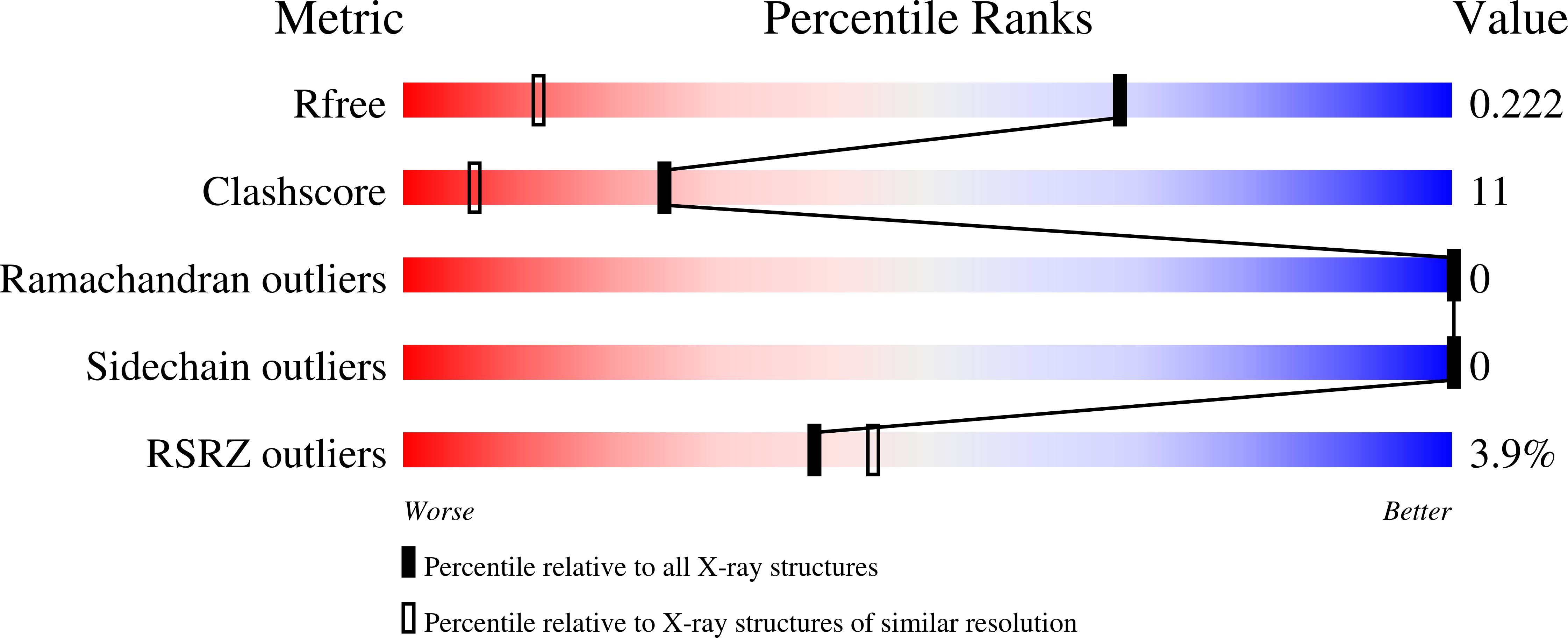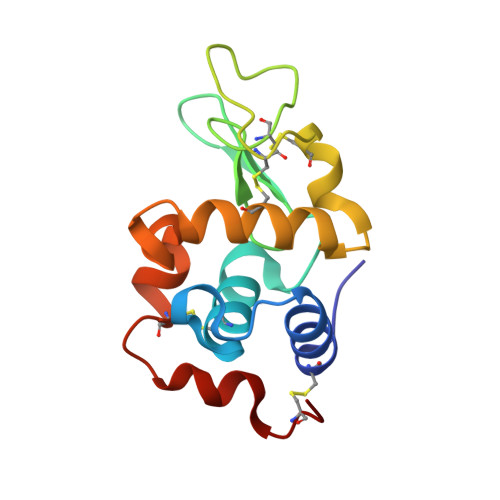A Combined Spectroscopic and Protein Crystallography Study Reveals Protein Interactions of Rh I (NHC) Complexes at the Molecular Level.
Daubit, I.M., Sullivan, M.P., John, M., Goldstone, D.C., Hartinger, C.G., Metzler-Nolte, N.(2020) Inorg Chem 59: 17191-17199
- PubMed: 33180473
- DOI: https://doi.org/10.1021/acs.inorgchem.0c02438
- Primary Citation of Related Structures:
6WRL, 6WRM - PubMed Abstract:
While most Rh-N-heterocyclic carbene (NHC) complexes currently investigated in anticancer research contain a Rh(III) metal center, an increasing amount of research is focusing on the cytotoxic activity and mode of action of square-planar [RhCl(COD)(NHC)] (where COD = 1,5-cyclooctadiene) which contains a Rh(I) center. The enzyme thioredoxin reductase (TrxR) and the protein albumin have been proposed as potential targets, but the molecular processes taking place upon protein interaction remain elusive. Herein, we report the preparation of peptide-conjugated and its nonconjugated parent [RhCl(COD)(NHC)] complexes, an in-depth investigation of both their stability in solution, and a crystallographic study of protein interaction. The organorhodium compounds showed a rapid loss of the COD ligand and slow loss of the NHC ligand in aqueous solution. These ligand exchange reactions were reflected in studies on the interaction with hen egg white lysozyme (HEWL) as a model protein in single-crystal X-ray crystallographic investigations. Upon treatment of HEWL with an amino acid functionalized [RhCl(COD)(NHC)] complex, two distinct rhodium adducts were found initially after 7 d of incubation at His15 and after 4 weeks also at Lys33. In both cases, the COD and chlorido ligands had been substituted with aqua and/or hydroxido ligands. While the histidine (His) adduct also indicated a loss of the NHC ligand, the lysine (Lys) adduct retained the NHC core derived from the amino acid l-histidine. In either case, an octahedral coordination environment of the metal center indicates oxidation to Rh(III). This investigation gives the first insight on the interaction of Rh(I)(NHC) complexes and proteins at the molecular level.
Organizational Affiliation:
Inorganic Chemistry I - Bioinorganic Chemistry, Faculty of Chemistry and Biochemistry, Ruhr-Universität Bochum, Universitätsstr. 150, 44801 Bochum, Germany.

















